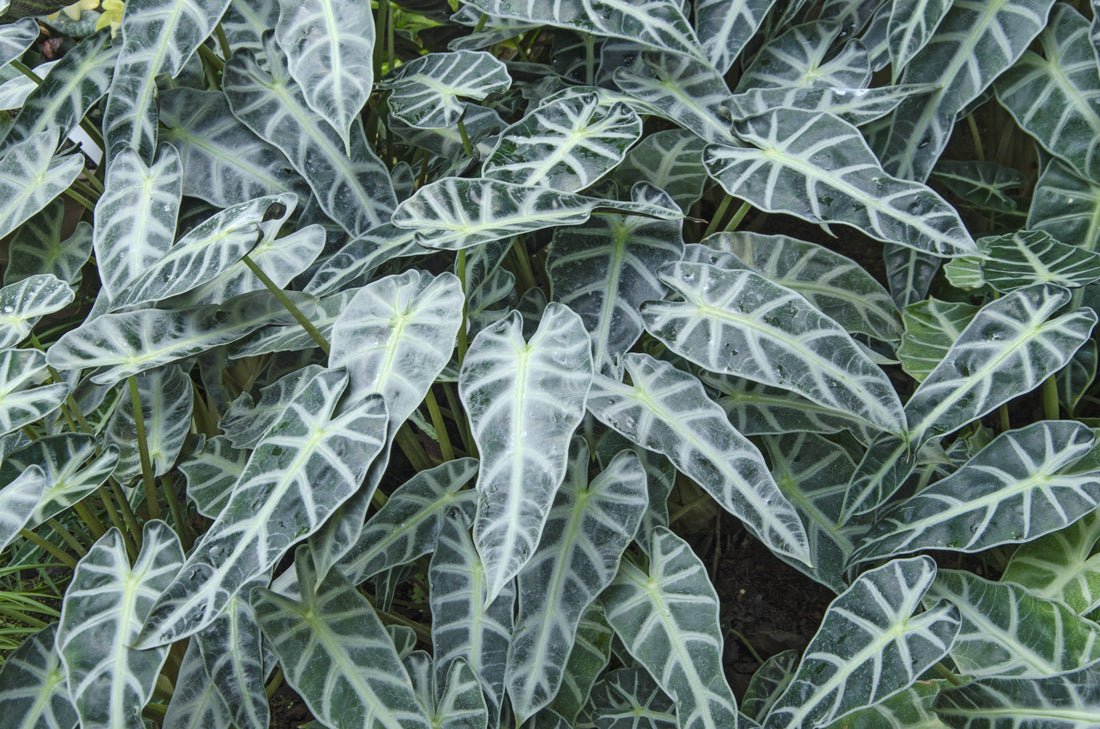Alocasias are plants that bring the jungle vibes up to 💯 with ease. Widely known as elephant ears, these tropical beauts have at least 97 different varieties. Some more rare than others, they are highly revered in the plant community as collectibles, while the more common varieties are used to enhance indoor and outdoor spaces all over the world.
GENERAL CARE
LIGHT
Place in medium to bright indirect light. Some varieties can tolerate short periods of direct light, but it's better to avoid it. If you notice dark markings or thinning foliage on your plant within the first week, this may indicate it is receiving too much sun.

WATER
Water weekly or when the top 2" of soil feel dry. The soil can stay moist but never soggy, so be sure to use your finger to check before each watering. In the winter, it's better to err on the drier side, allowing the soil to dry out almost completely.
FEEDING
Use diluted plant food once a month in the spring and summer. Stop feeding in the fall and winter since the plant goes dormant and will not need the extra nutrients.
TOXICITY
The entire plant is toxic when ingested, as it contains calcium oxalate crystals. Keep out of reach of pets and children.
Care instructions are usually consistent for most alocasias, but we always recommend researching your specific plant to make sure you get it right the first time.
COMMON ISSUES
Alocasias tend to be susceptible to bacterial or fungal leaf spot infections. They love humidity, but if the leaves are constantly wet, other factors like temperature and circulation may create the perfect breeding ground for infections to grow. To mitigate the risk of infection, avoid splashing, and provide humidity in a different way. Check out our humidity pro-tips here! If you do find yourself battling an infection, you can find extensive treatment information here.
Alocasias also tend to be susceptible to leaf tip burn. To protect your plants from these markings, avoid using fresh tap water in the soil. Instead, allow the water to sit uncovered for at least 24 hours prior to use.


